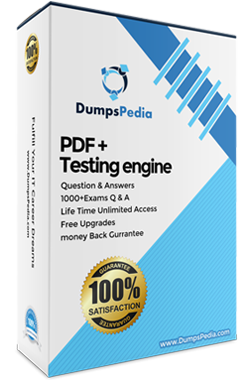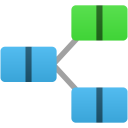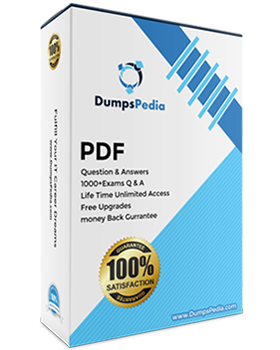
Practice of Internal Auditing Practice Questions
The most impressive hallmark of Dumpspedia’s IIA-CIA-Part2 dumps practice exam questions answers is that they have been prepared by the IIA industry experts who have deep exposure of the actual CIA exam requirements. Our experts are also familiar with the Practice of Internal Auditing exam takers’ requirements.
IIA-CIA-Part2 IIA Exam Dumps
Once you complete the basic preparation for Practice of Internal Auditing exam, you need to revise the IIA syllabus and make sure that you are able to answer real IIA-CIA-Part2 exam questions. For that purpose, We offers you a series of CIA practice tests that are devised on the pattern of the real exam.
Free of Charge Regular Updates
Once you make a purchase, you receive regular Practice of Internal Auditing updates from the company on your upcoming exam. It is to keep you informed on the changes in IIA IIA-CIA-Part2 dumps, exam format and policy (if any) as well in time.
100% Money Back Guarantee of Success
The excellent IIA-CIA-Part2 study material guarantees you a brilliant success in IIA exam in first attempt. Our money back guarantee is the best evidence of its confidence on the effectiveness of its Practice of Internal Auditing practice exam dumps.
24/7 Customer Care
The efficient IIA online team is always ready to guide you and answer your CIA related queries promptly.
Free IIA-CIA-Part2 Demo
Our IIA-CIA-Part2 practice questions comes with a free Practice of Internal Auditing demo. You can download it on your PC to compare the quality of other IIA product with any other available CIA source with you.
IIA-CIA-Part2 FAQs
The IIA-CIA-Part2 exam tests core internal auditing practices, including audit planning, execution, and reporting, risk assessment methodologies, internal control concepts, standards for professional practice of internal auditing, and techniques for effective audit communication and management within an organization.
The IIA-CIA-Part2 covers key risk assessment methodologies such as identifying and evaluating risk factors, using risk models and matrices, understanding the impact and likelihood of risks, conducting enterprise risk assessments, and integrating risk assessment into the overall audit planning and execution process.
The IIA-CIA-Part2 assesses knowledge of audit planning and performance by testing the ability to develop comprehensive audit plans, execute audits effectively, understand various auditing techniques, manage resources, and evaluate the performance and outcomes of audit activities against set objectives and standards.
The IIA-CIA-Part2 exam tests knowledge of internal audit practices, including managing audit engagements, fraud risk assessment, and internal control frameworks. It emphasizes practical audit techniques and reporting for internal auditors.
Study the IIA’s Practice Guides on fraud auditing and use Gleim or Surgent CIA Review materials for comprehensive coverage. Practice with Dumpspedia exam dumps to tackle scenario-based fraud detection questions.
Dumpspedia’s dumps include real questions on internal auditing, in PDF and Testing Engine formats, for effective, updated preparation.
The exam uses a scaled scoring system ranging from 250 to 750 points to ensure fairness across all test versions.
Passing Score: You must achieve a minimum scaled score of 600 out of 750.
Confidence Target: While the exact number of correct answers varies, candidates should aim for roughly 75% to 80% accuracy in practice sessions (like those on Dumpspedia) to feel secure about passing the actual exam.
Related Certification Exams
IIA-CIA-Part2 PDF vs Testing Engine










231
Customers Passed
IIA IIA-CIA-Part2
95%
Average Score In Real
Exam At Testing Centre
94%
Questions came word by
word from this dump
Practice of Internal Auditing Questions and Answers
Which of the following is the advantage of using internal control questionnaires (ICQs) as part of a preliminary survey for an engagement?
Internal audit staff lacks the expertise to perform a fraud investigation engagement stemming from a whistleblowing incident. Which of the following is the most appropriate
option for the chief audit executive?
Which of the following statements is true regarding internal controls?
What our customers are saying
After failing Part 2 twice, I tried these exam dumps. The realistic scenarios on compliance and controls were exactly what I needed. Scored 90% on my retake.
The exam questions mirrored the actual exam format, and the detailed explanations helped me grasp tricky governance and risk concepts. I passed on my first try with an 85%




